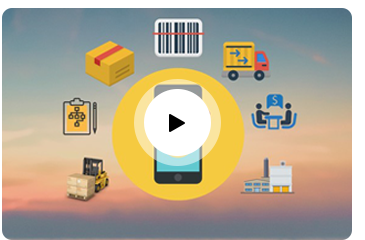SAP MM Training In Hyderabad
Materials Management module in SAP consists of several components and sub-components. The most prominent and widely used are Master Data, Purchasing and Inventory. Material Management as a process ensures no shortage of materials or any gaps in the supply chain process of the organization. SAP MM speeds up the procurement and material management activities, making the business run smoothly with complete time and cost efficiency. It deals with managing the materials (products and/or services) and resources of an organization with the aim of accelerating productivity and reducing costs. At the same time, SAP MM is quite versatile to accommodate changes that are frequent in any business environment.

| June 9th | MON – FRI (90 DAYS) Offline |
Timings – 09:30 AM to 10:30 AM (IST) |
| June 9th | MON – FRI (90 DAYS) Offline |
Timings – 09:30 AM to 10:30 AM (IST) |
| October 11th | MON – FRI (75 DAYS) Weekdays Batch |
Timings – 10:00 AM to 11:00 AM (IST) |
What are the course objectives?
- SAP MM ( Material Management ) is one of the important modules in SAP ERP software and MM application module supports the procurement and inventory functions occurring in day-to-day business operations.
- The most prominent and widely used are Master Data, Purchasing and Inventory.
- All of these components have their subcomponents that are essential in specific business processes, and all of the processes are executed by using transactions.
What are the roles and responsibilities and methodology of this module?
- Facilitate the implementation and support of SAP MM
- Perform detailed analysis of complex business process requirements and provide appropriate system solutions; identify, interpret, validate and document customer requirements
- Map client business requirements, processes and objectives; develops necessary product modifications to satisfy clients’ needs. •Design, customize, configure and testing of MM
- Identify gaps, issues and work around solutions.
- Document functional designs, test cases and results.
- Proactively identify and propose business process and/or system enhancements
- Provide consulting services on both new implementations and existing support projects
- Act as a liaison between the business functions and the technical team.
- Provide ad-hoc training and user support as required
- Work self-directed and independently; may act as subject matter mentor to more junior members
Who should go for this training?
Also, working experience in purchase department can do SAP MM Course.
What are the skills that you will be learning with this course?
- Knowledge of SAP MM solution capabilities and business process configurations
- Customizing experience within SAP MM; Knowledge of business processes within SAP MM
- Excellent consultancy skills and a pro-active attitude
- Configuration of master data and ability to guide and train the users on Business Process
- Writing functional requirements / designs
What are the prerequisites to learn this course?
Instructor-led Sessions
Weekday Classes: 50 sessions of 1 hours each.
Real-life Case Studies
Assignments
Lifetime Access
24 x 7 Expert Support
Certification
SAP Trainee.
Forum
1. INTRODUCTION TO ERP
- ERP Definition
- Characteristics of ERP
- Products of ERP
- Benefits of using ERP
2. INTRODUCTION TO SAP
- SAP History
- SAP Product line
- New Products of SAP
- Relation of New SAP Products with the core product
- Industry specific Products
- Type of SAP Projects
- Type of SAP Roles
- Architecture of SAP
- System Landscape
- Types of data used in the SAP system
3. INITIAL SCREENS Title Text
- How to login to the SAP system
- SAP Client / GUI
- SAP Session – What it is
- How to open a new Session
- Create new Sessions
- Navigation between Sessions
- Transactions and Activities
- Shortcuts or Transaction Codes
- SAP Easy Access screen
- SAP IMG screen
- Difference between Easy Access and IMG screens
4. ENTERPRISE STRUCTURE
- What is Enterprise Structure
- The different types of Enterprise Structure
- Company structure in real time
- Company structure for each process
- MM Structure against other process structure
- Enterprise Structure terms in real time against those used in the SAP system
- Definitions of the elements of enterprise structure
- Creation of Enterprise Structure elements in the SAP system
- Group
- Company
- Plant
- Store
- Purchasing Department
- Valuation Area
- Controlling Area
- Assignment of the Enterprise Structure elements in the SAP system
- Assign Company to Group
- Assign Plant to Company
- Assign Store to Plant
- Assign Purchasing Departments
- Assign Controlling Area
5. MASTER DATA
- Basics of Master Data
- Significance of Master Data
- Usage of Master Data
I. Material Master
- What is Material Master
- Views
- Subscreens
- Fields
- Maintenance of material data in the SAP system
- Prerequisites for creation of Material Master Record
- Creation of Material Master Record
- Changes to Material Master Record
- Other end user activities in Material Master
- Configuration of Material Master
- Screen Sequence
What is Screen Sequence
Significance and usage of Screen Sequence
b. Screen Reference
What is Screen Reference
Creating and using Screen Reference
- Field Selection
What is Field Selection
Criteria for defining field selection
- Field Reference
What is Field reference
Creating and using field references
- Material Type
What is Material Type
Usage of Material Type in the SAP system Defining and using Material Types
- Assign Number Range to Material Type
- Material Number formatting
- Material Groups
- Purchasing Group
- Purchase Value Key
- Shipping Instruction
- Vendor Master
-
- Who is a Vendor
- What is Vendor Master Record
- Division of Vendor Master data
General Data Company Code Data Purchasing Data
- Vendor Classification
-
v. Types of Vendor
- Regular Vendor One-time Vendor Accounting Vendor Purchasing Vendor Central Vendor
v. Prerequisites for creating Vendor Master Record
- Vendor Account Group and its significance
- Creation of Vendor Master Record
- Changing the Vendor Master Record
- Other End user activities of Vendor Master
- Configuration of Vendor Master
- Vendor Field Selection
What is Vendor field selection Significance of vendor field selection
Criteria for maintaining vendor field selection
b. Assignment of Number Ranges
- Screen selection for Vendor Master records
- Vendor Industries
- Terms of Payment
I. Purchasing Info Record
- Basics of Purchasing Info Record
What is Purchasing Info Record Significance of Purchasing Info Record
- Types of Purchasing Info Record
- Prerequisites for Purchasing Info Record
- Creation of Purchasing Info Record
- Changing the Purchasing Info Record
- Other End User activities for Purchasing Info Record
- Configuration
Defining Number Ranges for Purchasing Info Record Screen Selection for Purchasing Info Record
II. Source Determination
- Basics of Source Determination
What is Source Determination
Source Determination options in the SAP system
- Source List
- Basics of Source List
What is Source List
Significance and usage of Source List
- Creation of Source List
- Changing the Source List
- Other End User activities for Source List
- Configuration
- Quota Arrangement
- Basics of Quota Arrangement
What is Quota Arrangement
Significance and usage of Quota Arrangement
- Prerequisites for creating Quota Arrangement
- Creation of Quota Arrangement
- Changing the Quota Arrangement
- Other End User activities of Quota Arrangement
- Configuration
6. Purchasing
- Basics of Purchasing
What is Purchasing
Difference Between Purchasing and Procurement
- Purchasing Cycle
- Purchasing Documents
Different types of Purchasing documents used Division of Purchasing Document in the SAP system
Type of data maintained in each division of the purchase document
- Purchase Requisition
- Basics of Purchase Requisition
- Creation of Purchase Requisition
- Other End User activities of Purchase Requisition
- Request for Quotation (RFQ)
- Basics of RFQ
- Creation of RFQ
- Other End User activities of RFQ
- Quotation
- Basics of Quotation
- Creation of Quotation
- Other End User activities of Quotation
- Comparison
- What is comparison
- Criteria for comparison in the real time and in the SAP system
- The comparison process
- Purchase Order
- What is a Purchase Order
- Creation of Purchase Order with reference
- Creation of Purchase Order without reference
- Release Procedure
- Basics of Release Procedure
- Release Procedure and Approval process
- Release Characteristics
- Release Classes
- Release Groups
- Release Codes
- Release Indicators
- Release Strategies
- Releasing the Purchase Order through Release Procedure
- Optimization of Purchasing
- Concepts of Purchase Optimization
- Prerequisites for creating a Purchase Order automatically
- Creation of Purchase Order automatically
- Outline Agreements
- Basics
- Contracts
- Concepts
- Quantity Contract
- Value Contract
- Creation of a Contract
- Other End User activities of Contract
- Scheduling Agreements
- Concepts
- Creation of Scheduling Agreement
- Other End User activities of Scheduling Agreement
- Creation of Delivery Schedule
- Configuration of Purchasing
- Document Types configuration
- Assigning Number Ranges to Document Types
- Screen Selection for the Document Types
- Text Types and Copying Rules
- Tolerances for Archiving documents
7. Inventory Management
- Basics of Inventory Management
- Stock Types
- Movement Types
- Process of Goods Receipt
- Process of Goods Issue
- Stock Transfers
- What is Stock Transfer
- Types of Stock Transfer
- Transfer between Plants
- Transfer between Storage Locations
- Transfer between Stock types
- Transfer using Stock Transport Order
- Return to vendor
- Conditions under material returned to vendor
- Prerequisites for return to vendor
- Cancellation
- Initial Stock
- Reservations
- Physical Inventory
- Configuration
- Plant Parameters
- Number Range assignment
- Screen Selection
- End User Restrictions for Inventory Management activities
- Movement Types and its attributes
- Individual transaction configuration
8. Special Procurement Process / Special Stocks
- Basics of Special Procurement Process / Special Stocks
- Subcontracting
- What is the Subcontracting process
- Where used
- Steps defining the subcontracting process
- Configuration for subcontract process
- Consignment
- What is the Consignment process
- Where used
- Steps defining the Consignment process
- Configuration for Consignment process
- Pipeline
- What is the Pipeline process
- Where used
- Steps defining the Pipeline process
- Configuration for Consignment process
9. External Services Management
- Basics of External Services Management
- Service Master
- Service Conditions
- Service Purchase Order
- Service Entry Sheet
- Configuration of External Services Management
10. Valuation and Account Determination
- Valuation Types
- Split Valuation
- What is Split Valuation
- Usage and Significance of Split Valuation
- Global Types
- Global Categories
- Assignment
11. Pricing Procedure
- Condition Table
- Access Sequence
- Condition Types
- Calculation Schema
- Schema Group
- Schema Determination
- Condition Records
- Execution of Pricing Procedure
12. Batch Management
- Basics of Batch Management
- Configuration of Batch Management process in the SAP system
- Creation of Batch Master Record
- End User activities of Batch Management
- Batch Management with Classification
13. Output Determination
- Access Sequences
- Message Types
- Message Determination Schema
- Partner Roles per Message Type
- Assign Output Devices to Purchasing Groups
14. Logistics Invoice Verification
- Concepts
- Planned Costs
- Unplanned Costs
- Entry of Invoice
- Blocking of Invoice
- Releasing the blocked invoice
- Holding / Parking the invoice
- Releasing the parked invoice
15. Integration with FI/CO
- Concepts
- Valuation Grouping Code
- Valuation Class
- Account Category Reference
- Automatic Postings
- Modifiers
16. Integration with PP (Materials Requirement Planning)
- Concepts
- MRP Methods / Types
- MRP Group
- MRP Controller
- MRP Area
- MRP Configuration
- ASAP METHODOLOGY

![]()

![]()

Plus, the support team is really active 24*7 and always helping wherever you are struck. So, my experience with EMAX Technologies was great. Surely recommend to all
![]()
WHAT IF I MISS A CLASS?
WHAT IF I HAVE QUERIES AFTER I COMPLETE THIS COURSE?
HOW SOON AFTER SIGNING UP WOULD I GET ACCESS TO THE LEARNING CONTENT?
S THE COURSE MATERIAL ACCESSIBLE TO THE STUDENTS EVEN AFTER THE COURSE TRAINING IS OVER?
- Bengaluru
- Delhi
- Kolkata
- Chennai
- Hyderabad
- Pune
- Gurgaon
- Mumbai
- Noida
Comments are closed.



